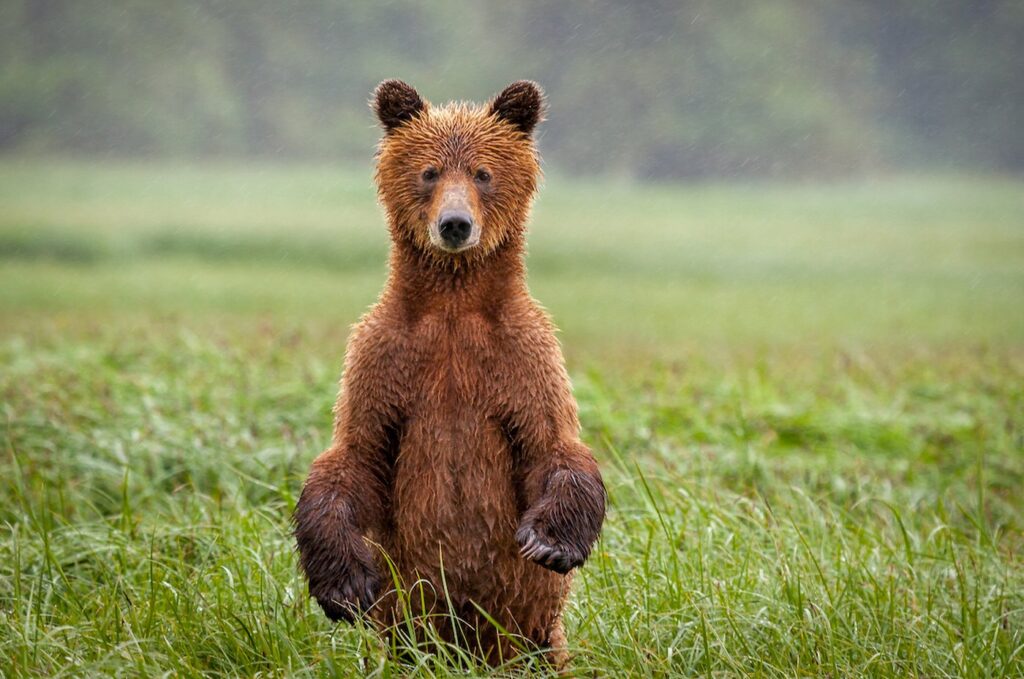Wildlife populations are plummeting while risks to nature rise across Canada as governments loosen environmental regulations to fast-track major projects, a World Wildlife Fund study shows.
A little over half of the 910 vertebrate species monitored between 1970 to 2022 are in decline, according to WWF-Canada’s latest Living Planet Report, which tracks changes in national wildlife populations across different habitats.
Wildlife populations have suffered an average decline of 10 per cent over the last half century, with some species faring better and others much worse, according to the report.
The situation is stark for the species groups examined — birds, fish, mammals, and reptiles and amphibians — all of which are trending in the wrong direction, said James Snider, WWF-Canada’s vice president of science, knowledge and innovation.

Canada is renowned for its spectacular nature, but wildlife is facing ongoing pressure from human activity, Snider said.
Urban development, farming, transport infrastructure, invasive species and disease are some top activities that negatively impact terrestrial wildlife. Stressors to marine life include noise, wastewater and physical threats from shipping, as well as overfishing and contaminants from land finding their way into coastal waters. Climate change impacts, such as extreme heat, drought, wildfires and floods, aggravate the cumulative effects driving biodiversity and habitat loss, Snider said.
After five decades of declining wildlife populations, now is not the time to walk back protections for biodiversity and habitats, Snider added — but in multiple jurisdictions, that’s what’s happening.
The federal government, BC and Ontario have recently implemented legislation aimed at fast-tracking large natural resource or infrastructure projects to protect the economy from US tariffs. First Nations and conservation groups have pushed back, saying the expanded powers weaken environmental protections and Indigenous rights.
Protecting nature and boosting the economy are not mutually exclusive, but rather, interdependent goals, Snider said.
“We can’t afford to neglect nature and biodiversity as we see these projects built,” he said. “There is a unique opportunity to do both, but let’s not waste it.”
Implementing large-scale habitat restoration projects, establishing key conservation areas and stewardship by Indigenous Guardian programs, in addition to new projects would have positive economic ripple effects, he said.
“We see new infrastructure as a means to advance conservation in those same landscapes,” Snider said.
“I think all of those pieces can come together and can be excellent national interest projects that support our economy.”
‘We need to intervene sooner’
Canada’s grassland habitats, concentrated in Prairie provinces, are the hardest hit with wildlife populations dropping by an average 62 per cent, including at-risk species like the tiny swift fox and prairie rattlesnake.
Monitored mammals in forest areas are also suffering significant declines, averaging 42 per cent, Snider said, pointing to long-endangered, iconic woodland caribou and at-risk grizzlies that range between Alberta and BC as examples. The spotted owl, a renowned casualty of old-growth logging, is also on the cusp of extinction in BC.
“Some of these stories are decades long, right?” he said.
“So far, unfortunately, we haven’t seen the effective recovery of those populations.”
A number of other animals are emerging as new concerns, such as bat species threatened by white-nose syndrome, or Canada’s emblematic snowy owl newly designated as threatened after suffering more than a 40 per cent population decline in the southern regions of its Arctic range due to a mix of rapid habitat changes spurred by global warming, as well as rodenticide poisoning, electrocution and collisions.
It’s much harder and more expensive to try to save at-risk species when they reach very small population sizes, Snider stressed.
“We need to intervene sooner,” he said.
“We need to be able to take those steps before species get into the emergency ward.”
The solutions to halt biodiversity loss are well understood but require political commitment and resources, Snider said.
Meaningful action requires a coordinated effort between the federal government in cooperation with provinces and territories responsible for resource and land management — and in certain cases, even other countries, he said.
Migratory species that can move across multiple provincial boundaries, such as boreal or woodland caribou, or marine mammals, such as endangered southern resident killer whales which frequent BC and US waters, are at heightened risk and require more complex recovery responses, Snider noted.
“Federal governments can bring forward policies and programs, and certainly investment in dollars, but that will always require support and alignment by the provinces and territories,” he said.
Indigenous conservation a ‘bright spot’
Federal and provincial initiatives are underway, which could make real differences for declining species and biodiversity if they are completed, Snider added.
The federal government, several provinces and territories, such as BC, Manitoba, Nova Scotia and Quebec, have committed to the goal of protecting 30 per cent of land and waters by 2030, in line with the global Kunming-Montreal Biodiversity pact crafted in Canada in 2022.
In particular, Canada and numerous provinces have taken strides to establish Indigenous-led protected conservation areas (IPCAs), such as the Great Bear Sea initiative on the BC coast, which Snider described as “bright spots” for conservation in the country.
“I think Canada has been an [international] leader in terms of supporting Indigenous land conservation,” he said.
“We need to continue to be investing in [IPCAs] to meet conservation goals.”
There also needs to be renewed commitment and recognition of the extent of habitat restoration efforts needed to protect or restore biodiversity and at-risk populations, Snider said, especially in southern regions of the country with the largest human population and activities. This would produce benefits to communities and the economy beyond saving wildlife, he added.
“The broad-scale restoration that is necessary in those degraded ecosystems — [whether] by investing in our grasslands, forests, or our wetlands — will benefit the recovery of wildlife,” he said.
“But, it’ll deliver broad benefits in terms of our climate change mitigation and adaptation goals as well.”







